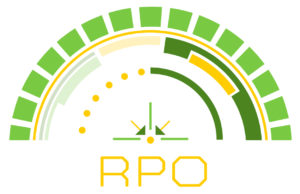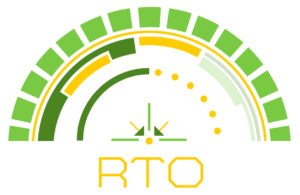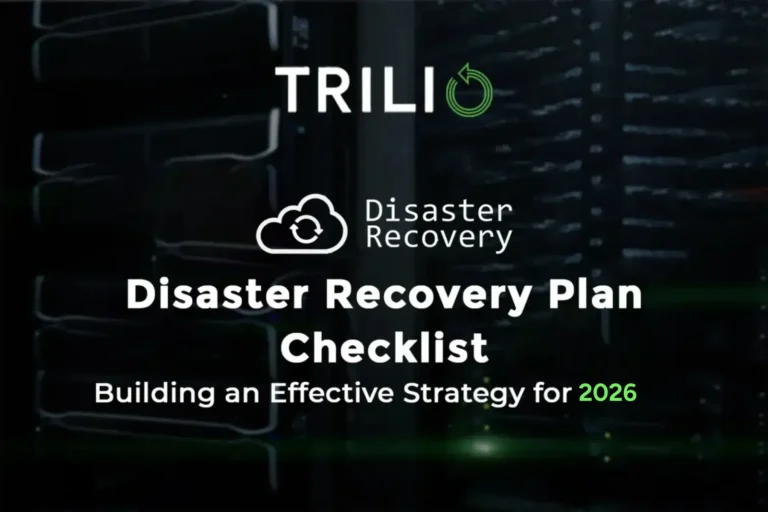Introduction
RPO vs RTO – But what does this actually mean?
Determining and quantifying an acceptable level of risk for your organization can be a daunting task, and disaster recovery is certainly no exception. Fortunately, Recovery Time Objective (RTO) and Recovery Point Objective (RPO) can help mitigate ambiguity at an operational level, providing a practical framework that enables efficient planning and execution.
By focusing on RTO and RPO, these critical considerations can be given the necessary attention, thereby ensuring that they are not neglected.
Definition
RPO – Recovery Point Objective
The Recovery Point Objective (RPO) is a significant component of any disaster recovery plan. RPO is a measure of the amount of data that a business can afford to lose, usually expressed in terms of time, such as one hour’s worth of data. In the event of data loss or corruption, a production system can be restored by reverting to a backup. RPO establishes the point in time to which you are willing to revert and accept the loss of all data beyond the latest recovery point.

The granularity, or frequency, of point-in-time copies, is determined by RPO. If your business has a low tolerance for data loss, backups will be required more frequently, and a larger amount of storage will need to be allocated to house these backups. RPO is essentially an application-specific attribute as different applications within an organization hold varying degrees of business value.
When determining the RPO, it is critical to consider the risk of faulty backups. A single faulty point in time will result in the recovery point being doubled between the two adjacent points in time. Regular backup testing ensures that backups are recoverable when required, and the possibility of misconfigurations and lapsed licensing negatively impacting production efforts can be avoided.
RTO – Recovery Time Objective
The Recovery Time Objective (RTO) refers to the amount of time your organization can afford to lose following a disaster until business operations can resume. This involves several factors that are often overlooked, including the disaster declaration process, system setup, recovery execution, backup access, data transfer, and system restart.

When determining the disaster declaration process, it’s essential to establish who is authorized to declare a disaster and what steps they must take before initiating recovery. Additionally, it’s crucial to consider the time required to set up an operational system at a secondary site in the event of damage to the production site.
The recovery execution time should also be taken into account, along with the time required to access backup data. If the data is stored remotely, the time it takes to connect to the backup site must be considered. The transfer time for data is also significant, as transferring a large dataset over a network can take several minutes or more.
The time required to restart servers, launch applications, and load data into production should also be considered. Analyzing how these activities impact the recovery process is crucial to establishing a realistic RTO. Failure to plan these processes correctly can result in organizing an action plan in real-time, which may not meet the designated objective.
RPO vs RTO
Before delving into the subject matter further, it is essential to clarify the disparities between the two concepts. RPO concentrates on data loss, while RTO focuses on application downtime and the time required to restore full functionality following an outage.
Although they are interrelated and measured in a similar manner, they deal with two critical but distinct aspects of disaster recovery.
RPO vs RTO in Disaster Recovery
When it comes to disaster recovery planning two important factors to consider are RPO (Recovery Point Objective). RTO (Recovery Time Objective). These factors play a role in ensuring the resilience and continuity of business operations. By understanding and effectively implementing these concepts organizations can minimize the impact of a disaster on their operations.
Determining Tolerable Downtime and Data Loss Limits
Every organization needs to determine how much downtime they can tolerate for services and how much data loss they find acceptable in case of a disaster. The RTO sets the time it should take to recover services and get back to operations. On the other hand, the RPO represents the level of data loss in terms of time specifying up to what point data must be recovered.
By defining these limits organizations can accurately assess their disaster recovery strategies’ effectiveness. They can then customize their plans. Allocate resources accordingly to meet these objectives.
Minimizing Impact on Business Operations
When implemented RPO and RTO values not only help organizations recover efficiently from a disaster but also minimize any negative impact on day-to-day business operations.
When organizations decrease the Recovery Point Objective (RPO) they can make sure that data is recovered instantly, minimizing any loss of information and allowing business operations to resume using the recent data available.
Similarly, when organizations minimize the Recovery Time Objective (RTO) they can reduce the time it takes to restore services. This ensures continuity in business operations. Prevents financial losses, damage to reputation, or noncompliance with regulations.
In general, effectively managing RPO and RTO during disaster recovery planning greatly contributes to the resilience and long-term viability of organizations when faced with incidents.
RPO vs RTO in Backup and Recovery Strategies
When it comes to ensuring the safety and availability of data, backup and recovery strategies are important. In developing these strategies organizations rely on two metrics: RPO (Recovery Point Objective) and RTO (Recovery Time Objective).
Frequency of Data Backups:
RPO helps organizations determine the amount of data loss during disruptions. It guides them in deciding how often they need to back up their data to minimize loss. For instance, if an organization sets an RPO of 4 hours they would need to perform backups every 4 hours to ensure data loss in case of a disaster.
Restoration Prioritization:
On the other hand, RTO focuses on recovery time and aids in prioritizing restoration efforts. It establishes the downtime for applications or systems following a disruption. By utilizing RTO organizations can determine the sequence in which applications and systems should be restored during recovery ensuring that critical processes are up and running swiftly.
Data Availability, Integrity, and Recoverability:
Both RPO and RTO play a role, in guaranteeing data availability, integrity, and recoverability. By establishing the levels of data loss and downtime these metrics play a role, in helping organizations be well-prepared for any potential disruptions. With proper backup and recovery strategies, in place, organizations can effectively minimize the impact of incidents. Ensure the continuation of their operations.
RPO and RTO are metrics that guide the development of backup and recovery strategies. They assist organizations in determining the frequency of data backups prioritizing restoration efforts and guaranteeing data availability, integrity, and recoverability. By focusing on these metrics organizations can effectively safeguard their data. Reduce downtime ultimately enabling them to thrive when faced with unexpected disruptions.
Considering Risks and Reducing Disruption
When reducing risks, two factors called the Recovery Point Objective (RPO) and the Recovery Time Objective (RTO) must be taken into account. These evaluations aid in ensuring that, in the event of data loss or system failure, corporate operations can continue uninterrupted.
To evaluate risks effectively it is essential to determine the levels of data loss and system downtime. RPO helps organizations define the amount of data that can be lost without causing harm to their operations. By establishing an RPO businesses can ensure they have accurate data available for recovery purposes.
On the other hand, RTO focuses on how operations can be restored after an incident. It provides organizations with insights into the time required for system recovery and resumption of activities. By setting a RTO companies can minimize the impact of downtime on productivity and customer satisfaction.
Regularly assessing RPO and RTO metrics is crucial, for evaluating and minimizing risks associated with data loss and system downtime. This involves conducting business impact assessments to understand the consequences of disruptions.
To effectively protect and recover systems and data organizations must comprehend the operational consequences involved.
It is vital for organizations to align their Recovery Point Objective (RPO) and Recovery Time Objective (RTO) with their business objectives in order to minimize disruptions. This alignment guarantees that the recovery objectives are, in sync with the requirements and priorities of the business. For instance, if a business heavily relies on real-time data it becomes crucial to have an RPO and swift RTO to prevent disruptions and revenue loss.
Moreover, organizations can employ strategies aimed at minimizing disruption. These strategies encompass implementing systems, backup solutions, and disaster recovery plans that are in line with their RPO and RTO goals. Regular testing and validation of these strategies play a role in identifying vulnerabilities as well as ensuring that necessary measures are put in place to prevent or mitigate potential risks.
Assessing risks and minimizing disruption stands as a component of risk management. The RPO and RTO metrics equip organizations with information to comprehend their recovery objectives while prioritizing them accordingly. By aligning these metrics with business objectives and implementing effective strategies organizations can reduce the impact of data loss and system downtime while ensuring operations.
Cost factors for RPO vs RTO
Considering the costs of RPO (Recovery Point Objective) and RTO (Recovery Time Objective) is crucial when implementing these requirements. Organizations must carefully weigh the implications while determining their RPO and RTO targets.
Striking a balance between achieving RPO and RTO targets and aligning them with business needs and budget constraints is important. Although it’s desirable to minimize data loss and downtime as possible it can come at a higher cost.
1. Balancing Cost and Meeting Business Needs:
Organizations should thoroughly assess the cost of implementing RPO vs RTO measures against the impact on business operations. For businesses dealing with critical data or operating in regulated industries investing more to achieve faster recovery times with minimal data loss may be justified.
On the other hand businesses with critical data or limited financial resources may need to opt for more relaxed RPO and RTO targets to strike a reasonable balance.
2. Potential Consequences of Inadequate Planning:
Insufficient planning for RPO and RTO can result in expenses due to recovery times and increased data loss.
If a disaster or system failure occurs it’s crucial for organizations to properly consider the RPO vs RTO targets. Failure to do so could result in periods of downtime which can lead to losses and damage the organization’s reputation.
Furthermore, inadequate planning for RPO and RTO may result in data loss. This could necessitate data recovery services. Even expose the organization to legal consequences due to data breaches.
To make a case, for investing in RPO and RTO targets organizations should thoroughly evaluate the potential costs associated with longer recovery times and increased data loss.
Regulations and Application in Various Industries
Different industries and their respective regulations play a role in determining the RPO (Recovery Point Objective) and RTO (Recovery Time Objective) requirements. It’s essential to understand that there is no one-size-fits-all approach when it comes to these metrics. Industries dealing with data, such as healthcare or finance need to follow specific regulations like the General Data Protection Regulation (GDPR) or the Health Insurance Portability and Accountability Act (HIPAA).
Moreover, each industry has its needs concerning RPO and RTO. The importance of their services and the level of data protection required to influence the acceptable recovery timeframes. For example, financial institutions may prioritize an RTO to minimize financial losses in case of a disaster. On the other hand manufacturing companies might focus on achieving an RPO that minimizes both data loss risks and production downtimes.
Organizations must give consideration to standards while establishing their RPO and RTO metrics. Failure to meet these requirements can lead to penalties and legal consequences. Therefore aligning the RPO and RTO, with industry regulations not only ensures data protection but also guarantees compliance with legal obligations.
Optimizing System Performance with RPO vs RTO
When it comes to enhancing system performance, analyzing the metrics of Recovery Point Objective (RPO) and Recovery Time Objective (RTO) plays a role. Understanding these metrics allows businesses to tune their systems for efficiency while minimizing disruptions.
Identifying Vulnerabilities and Bottlenecks
An important advantage of examining RPO and RTO is the ability to identify weaknesses or bottlenecks in data backup and recovery processes. By monitoring these metrics businesses can detect any hardware, software, or inefficient data transfer methods that might impede overall system performance.
Ensuring Efficient and Timely Data Recovery
The metrics of RPO vs RTO also play a role in ensuring timely data recovery. Setting targets for RPO and RTO enables businesses to prioritize their systems and data. This approach allows them to focus on recovering the information first, reducing downtime, and maximizing productivity.
Overall, optimizing system performance, through the consideration of RPO and RTO metrics empowers businesses to proactively address vulnerabilities while ensuring data recovery processes. This not only mitigates the risk of disruptions but also strengthens the organization’s overall resilience.
Aspects of Technology and Backup Storage
When it comes to storage, organizations have a range of technologies and solutions to choose from. It’s essential to select the backup storage options based on the requirements, for recovery point objectives (RPO) and recovery time objectives (RTO).
Cloud-based storage has become increasingly popular among organizations because of its scalability, flexibility, and cost-effectiveness. By storing backups in data centers, cloud-based storage offers an off-site solution that minimizes the risk of data loss. The ability to access backups from anywhere at any time significantly improves disaster recovery capabilities.
On-premises storage, on the other hand, involves keeping backups within an organization’s infrastructure. This provides a level of control and security over data but may require additional investments in hardware and maintenance. When considering on-premises storage, it is essential to take into account the organization’s existing infrastructure and available resources.
Hybrid storage solutions combine the advantages of both cloud-based and on-premises storage. This approach allows organizations to store data on-premises for recovery while keeping less sensitive data in the cloud, for cost optimization purposes.
Here is where Trilio comes into play. Trilio is a comprehensive backup solution designed specifically for open-source virtualization and cloud platforms, such as OpenStack and Red Hat Virtualization. It offers VM-level backups, incremental backups, and application-aware backups. Organizations can seamlessly integrate Trilio into their hybrid storage strategy to ensure data protection and rapid recovery while maintaining the balance between security and accessibility.
Finding the balance between security and accessibility is crucial for organizations to customize their storage strategies according to their specific RPO and RTO goals.
Regardless of the chosen backup storage method, it is important to select technologies that can optimize RPO and RTO planning. Nowadays, many solutions offer features like data deduplication, incremental backups, and instant recovery capabilities. These technologies greatly minimize data transfer and storage requirements, resulting in reduced recovery times and minimized disruptions.
To sum up, the selection of storage technologies and solutions, including Trilio, plays a crucial role in effective RPO vs RTO planning. Whether it’s cloud-based storage, on-premises storage, or a combination of both approaches, organizations need to consider their unique needs while assessing the advantages and disadvantages of each option. By making informed decisions, storage organizations can significantly enhance their overall data protection and recovery capabilities.
Now, let us examine other terminologies that are relevant to both RPO and RTO.
FAQ – Frequently Asked Questions
What does RPO mean?
The Recovery Point Objective (RPO) is a significant component of any disaster recovery plan. RPO is a measure of the amount of data that a business can afford to lose, usually expressed in terms of time, such as one hour’s worth of data. In the event of data loss or corruption, a production system can be restored by reverting to a backup. RPO establishes the point in time to which you are willing to revert and accept the loss of all data beyond the latest recovery point.
What does RTO mean?
The Recovery Time Objective (RTO) refers to the amount of time your organization can afford to lose following a disaster until business operations can resume. This involves several factors that are often overlooked, including the disaster declaration process, system setup, recovery execution, backup access, data transfer, and system restart.
What is the metric of RTO?
The RTO is typically expressed in terms of a time window, such as “no more than 4 hours of downtime,” and it is used to guide the selection of backup and recovery solutions that can help minimize the downtime and restore operations as quickly as possible.
What is the metric of RPO?
The RPO is typically expressed in terms of a time window, such as “no more than 1 hour of data loss,” and it is used to guide the selection of backup and recovery solutions that can help minimize the impact of a disruptive event.
5 Things – Why should you care about RPO vs RTO
-
- Minimize data loss: RPO helps organizations determine the maximum amount of data loss they can tolerate and guides the selection of backup and recovery solutions that can help minimize data loss. This is critical for organizations that rely on real-time or mission-critical data.
- Reduce downtime: RTO helps organizations determine the maximum amount of time they can afford to be without a particular system or application before it begins to have a significant impact on their operations. This guides the selection of backup and recovery solutions that can help minimize downtime and restore operations as quickly as possible.
- Meet regulatory requirements: Many organizations are required to meet specific regulatory requirements related to data retention and recovery. By setting appropriate RTO and RPO values, organizations can ensure that they are compliant with these requirements.
- Maintain customer trust: Downtime or data loss can damage an organization’s reputation and erode customer trust. By setting appropriate RTO and RPO values, organizations can ensure that they are able to quickly and effectively recover from disruptive events and maintain customer trust.
- Reduce costs: Downtime and data loss can be expensive for organizations, both in terms of lost productivity and revenue, as well as the cost of recovery efforts. By setting appropriate RTO and RPO values, organizations can minimize these costs by minimizing the impact of disruptive events.




